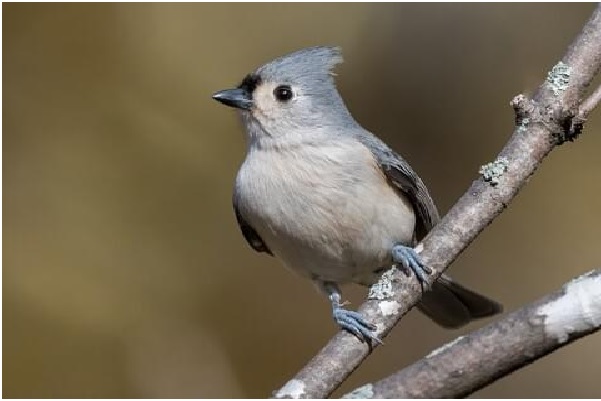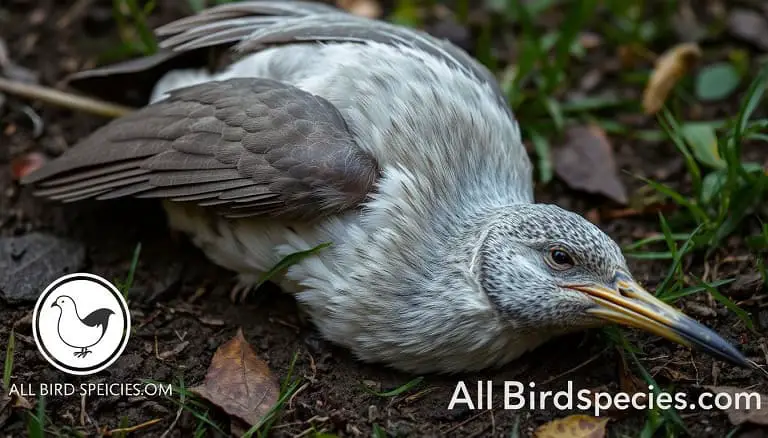Why the Tufted Titmouse is a Favorite Among Bird Watchers
The Tufted Titmouse is a small, charming bird that captivates bird watchers with its distinctive appearance and lively behavior. Native to the eastern United States, this avian species has become a favorite among bird enthusiasts for several reasons, including its striking physical features, engaging personality, and adaptability to various habitats.
Whether seen flitting through the trees, visiting a backyard feeder, or engaging in courtship displays, it continues to capture the hearts of those who take the time to observe and appreciate its many endearing qualities. This article delves into what makes the Tufted Titmouse appealing to bird watchers and explores its unique characteristics and behaviors!
Distinctive Physical Features
One of the most noticeable traits is its distinctive appearance. Its plumage is a pleasing blend of soft gray on the back, white on the belly, and a subtle peachy color on the flanks. However, the most striking feature is the crest or “tuft” of feathers on its head, which gives the bird its name and adds a touch of elegance to its overall appearance.
The large, dark eyes and tiny, delicate beak enhance its expressive face. This combination of features makes the bird easily recognizable and endearing, even to those who may not be avid bird watchers.
Playful and Energetic Behavior
The Tufted Titmouse bird is known for its playful and energetic behavior, which adds to its appeal. These birds are highly active and agile, often seen flitting about in the trees with remarkable speed and agility. They frequently engage in acrobatic displays, hanging upside down or performing rapid movements that are both entertaining and fascinating to observe.
These are curious about their surroundings and will often explore various objects and areas in their habitat. This inquisitiveness makes them a joy to watch as they investigate feeders, nest boxes, and other bird-friendly additions to gardens and woodlands.
Melodious Song and Calls
In addition to their visual appeal, Tufted Titmouse is known for melodious songs and distinctive calls. Their vocalizations include a range of sounds, from cheerful whistling to sharp, high-pitched calls. These vocalizations are not only pleasant to hear but also serve as a way for bird watchers to identify and locate these charming birds. The song of the Tufted Titmouse bird adds a musical quality to the bird-watching experience, enhancing the overall enjoyment of observing these lively creatures.
Adaptability to Various Habitats
The Tufted Titmouse bird is highly adaptable and can thrive in various habitats. While they are present in deciduous forests, they also adapt well to suburban and urban environments, where they frequent parks, gardens, and bird feeders. Their ability to thrive in diverse settings makes them a regular and reliable presence in many bird watchers’ backyards.
This adaptability is partly due to their diet, which includes food sources such as seeds, insects, and small fruits. Tufted Titmouse are famous for visiting feeders regularly, making them accessible to bird watchers who provide food sources in their yards. This easy accessibility contributes to their popularity among bird enthusiasts.
Engaging Nesting Behavior
The nesting behavior of the Tufted Titmouse is another aspect that draws the interest of bird watchers. These birds are cavity-nesters and often use old woodpecker holes or artificial nest boxes. They are known for their meticulous nesting habits, collecting materials such as moss, feathers, and spider silk to line their nests.
The courtship and nesting rituals are captivating to observe. The male engages in a courtship display that includes presenting food to the female and performing various flight maneuvers. Once a pair has established a nesting site, they work together to build the nest and care for their eggs and young.
Year-Round Presence
Unlike some migratory species, the Tufted Titmouse is a year-round resident in its range. In winter, these birds often form mixed-species flocks with other small songbirds, such as chickadees and nuthatches, providing additional opportunities for bird watchers to observe their interactions and behaviors.
Their year-round presence also means that bird watchers can witness the full range of their behaviors, from their lively summer activities to their more subdued winter habits. This consistent presence makes the Tufted Titmouse a reliable and enduring favorite among bird enthusiasts.
Educational Value
The Tufted Titmouse is not only a source of enjoyment but also provides educational value for bird watchers. Observing their behavior, vocalizations, and nesting habits offers insights into avian life and ecology. Educational programs and bird-watching groups often highlight the Tufted Titmouse as an example of successful adaptation and resilience in avian species. This educational aspect adds depth to the bird-watching experience and fosters a greater appreciation for these fascinating creatures.
Conservation Status and Efforts
The Tufted Titmouse is currently classified as a species of Least Concern by the International Union for Conservation of Nature (IUCN). Its population is stable and widespread across the eastern United States, benefiting from its adaptability to various habitats, including urban and suburban areas. Despite its stable status, conservation efforts are crucial to maintaining its habitat and ensuring future populations remain healthy. Bird watchers and conservationists can support these efforts by promoting habitat preservation, participating in bird counts, and creating bird-friendly environments in their yards.
Ways To Bring Titmouse to Your Yard
Attracting Tufted Titmouse to your yard is easy with a few key strategies. First, install bird feeders stocked with sunflower seeds, peanuts, or suet, as these are favorites of Tufted Titmouse. Adding a birdbath provides a water source, essential for drinking and bathing. To make your yard even more inviting, offer nesting boxes or natural cavities, as these birds are cavity-nesters and will readily use them. Planting native shrubs and trees can also create a suitable habitat by providing cover and additional food sources.
Conclusion
The Tufted Titmouse is a favorite among bird watchers for many reasons. Its distinctive physical features, playful behavior, songs, adaptability to various habitats, engaging nesting rituals, year-round presence, and educational value all contribute to its widespread appeal. The Tufted Titmouse offers a delightful and enriching experience, combining beauty, entertainment, and learning opportunities in one charming package.







